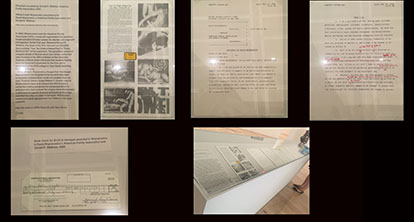On October 4, 2018, NYU Fales Special Collections archivist Nicholas Martin hosted a tour and talk for library, art, and museum professionals and other information specialists about the ongoing exhibition at the NYU Mamdouha S. Bobst Gallery. The exhibition highlighted the papers and work of artist, writer, AIDS activist, and photographer David Wojnarowicz (pronounced Voe-nah-ROE-vich). Wojnarowicz’s work incorporated multiple media that explored life in New York in the 1970s and 1980s from an outsider’s perspective, as well as confronted politics, morality, and his own diagnosis.

The Exhibition in Question
The exhibition at NYU, officially known as The Unflinching Eye: The Symbols of David Wojnarowicz, ran at the Bobst Gallery from July 12th to October 21st, 2018. It was staged in conjunction History Keeps Me Awake At Night, another show of the artist’s work that ran at the Whitney Museum of American Art from July 13th to September 30th. The NYU show featured photos, journals, and other objects separated into three major sections that showcased the creative breadth and symbolic depth of Wojnarowicz’s work as well as the way his personal relationships are reflected in his photography and his journals. The exhibition was coordinated by Nicholas Martin, with curatorial assistance provided by Hugh Ryan, Marvin Taylor, and Marcelo Yáñez.
Making Curatorial Decisions
During his tour, Martin spoke about the challenges of curating an artist’s work, both from the standpoint of honoring the artist’s legacy and from a logistical perspective. He explained that when staging a show, one of the most important questions an archivist asks is always, “What was the artist’s intent?” When the artist is no longer living (Wojnarowicz passed away in 1992), the archivist must make informed decisions about what to include and how to include it. Unfinished work can pose a problem – was this work even important to the artist? How do we know? One example of this is Wojnarowicz’s “Magic Box,” in which he collected a myriad of items, ranging from a Buddha sculpture to tweezers and nail clippers. It was never clear what the artist meant to do with these objects or how much he cared about them at all. Martin and his colleagues chose to disassemble the box for the exhibition, displaying it with its contents without making any assumptions about its purpose.
Logistical Obstacles
The “Magic Box” also contributed to the logistical concerns of the show, Wojnarowicz wasn’t thinking about long-term storage of his “Magic Box” items, but many of the objects within were made of materials that are harmful to each other and that present a challenge for archivists: should they store and show them altogether to preserve how they were found or separate them to preserve their physical integrity? Martin’s solution for the exhibition was to unpack the box and display everything together. In the archives, everything is also kept together and patrons are warned about handling procedures if they request to see the box.
Other conservation risks for Wojnarowicz’s work that Martin described included humidity and light levels, which can prove particularly dangerous for the artist’s printed photographs. The constraints of the NYU Gallery meant that Martin had to work with facilities management, installers, and contract curators to try to correct for the structural issues (ex. high light levels from large windows) as best he could. Overall, the exhibition took about 100 hours of preparatory conservation work.
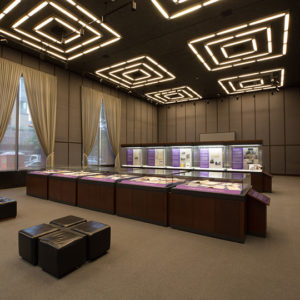
Reflection
I found Martin’s talk engaging and educational. Not only did I learn about David Wojnarowicz’s work, but I was finally able to understand all the moving parts of putting on an exhibition that lies at the intersection of art, archives, and museum practices. To be sure, there were challenges unique to this show, like the fact that it was a companion to the Whitney show and sometimes had to use facsimiles of items that were leant to the museum instead of the real thing. In general, however, Martin’s talk focused on issues universal to archival exhibitions and provided helpful insight into how to solve them. His discussion touched upon concerns that can be found in many foundational exhibition texts, like Organizing Exhibitions: A Handbook for Museums, Libraries and Archives by Freda Matassa.
In the future, I plan to explore archival practices from both sides of the equation, patron and curator. I hope to attend more exhibitions of this kind and, when talks aren’t available, I will try to analyze them myself to figure out what problems the curator may have faced in staging it. As a student, I hope to take classes in archival management and possibly even museum practices as well as apply for internships in this field to explore my interest in it and see if it’s something I want to pursue for my career.
References:
Communications, N. W. (n.d.). NYU Presents Exhibition of David Wojnarowicz Papers, Coinciding with Whitney Museum of American Art Retrospective. Retrieved November 5, 2018, from http://www.nyu.edu/content/nyu/en/about/news-publications/news/2018/july/nyu-presents-exhibition-of-david-wojnarowicz-papers–coinciding-
David Wojnarowicz. (n.d.). Retrieved November 5, 2018, from https://www.visualaids.org/artists/detail/david-wojnarowicz
David Wojnarowicz: History Keeps Me Awake at Night. (n.d.). Retrieved November 5, 2018, from https://whitney.org/Exhibitions/DavidWojnarowicz
Exhibition | The Unflinching Eye: The Symbols of David Wojnarowicz – News and Events. (n.d.). Retrieved November 5, 2018, from https://wp.nyu.edu/library-news/exhibition-the-unflinching-eye-the-symbols-of-david-wojnarowicz/
Matassa, F. (2014). Organizing Exhibitions : A Handbook for Museums, Libraries and Archives. London: Facet Publishing. Retrieved from https://login.ezproxy.pratt.edu/login?url=http://search.ebscohost.com/login.aspx?direct=true&db=nlebk&AN=969818&site=eds-live
Wharton, G., Engel, D., and Taylor, M. C. (2016). The Artist Archives Project: David Wojnarowicz. Studies in Conversation, 61, 241–247. https://doi.org/10.1080/00393630.2016.1181350
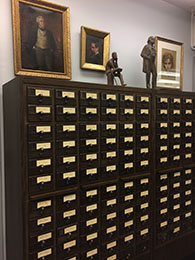
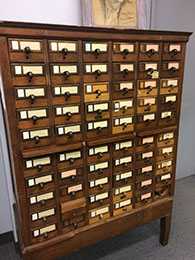 The Fales Library and Special Collections, located on the third floor of ElmerHolmes Bobst Library at
The Fales Library and Special Collections, located on the third floor of ElmerHolmes Bobst Library at 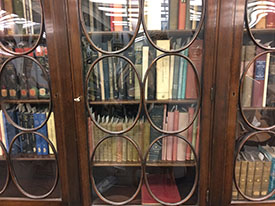 phone-logs, to art-objects, this collection contains the primary source materials for the topic of the discussion today,
phone-logs, to art-objects, this collection contains the primary source materials for the topic of the discussion today, 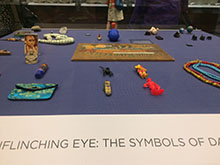 archive-based exhibition, discuss his kindred relationship with Wojnarowicz. He conveyed a deep understanding of the symbols of Wojnarowicz’ art that in part had developed through years of studying the materials on display.
archive-based exhibition, discuss his kindred relationship with Wojnarowicz. He conveyed a deep understanding of the symbols of Wojnarowicz’ art that in part had developed through years of studying the materials on display.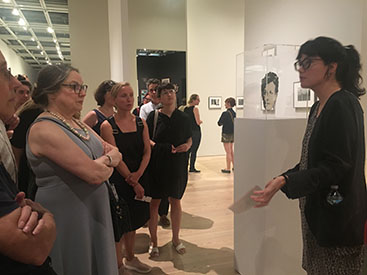 which may have been used in Wojnarowicz’ early photo series, Arthur Rimbaud in New York. Archival material represents a sizable portion of the work on display. To name a few examples, there is an audio recording of a 1992 reading given by Wojnarowicz at The Drawing Center; a black and white unfinished film that was borrowed from the Fales Collection; and a vitrine containing a pamphlet from the American Family Association and the annotated Affidavit for David Wojnarowicz v. American Family Association and Donald E. Wildmon.
which may have been used in Wojnarowicz’ early photo series, Arthur Rimbaud in New York. Archival material represents a sizable portion of the work on display. To name a few examples, there is an audio recording of a 1992 reading given by Wojnarowicz at The Drawing Center; a black and white unfinished film that was borrowed from the Fales Collection; and a vitrine containing a pamphlet from the American Family Association and the annotated Affidavit for David Wojnarowicz v. American Family Association and Donald E. Wildmon. 